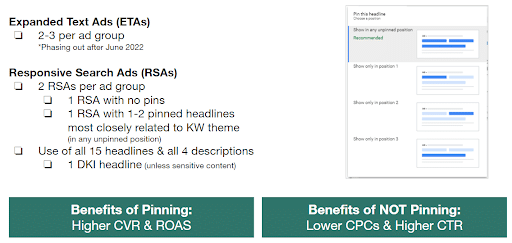Preparing for Google’s Privacy Policy Change

What is The Recent Google Privacy Policy Change?
Google has recently announced an update in their current Google privacy policy and plans to end the support of third-party cookies within the next two years. Essentially, Google will stop the utilization of cross-site user tracking and targeted advertising outside its own properties.
In our day and age, information is accessible to billions of people at the touch of a button. With so much information and so many targeted ads circulating the web, users have started to become more wary about their personal privacy and data protection. With Google supporting third party services to collect user data and personal info, a level of untrustworthiness has developed among tech and digital marketing agencies.
“72% of people feel that almost all of what they do online is being tracked by advertisers, tech companies, or other companies” says David Temkin, Google Director of Product Management, Ads Privacy and Trust.
With greater privacy demands, a new roll out of privacy settings for better transparency and control for users has begun. Google has also said they will not:
- Create alternative conversion tracking identifiers across the web
- Use collected personal data to enable targeting on other sites
However, Google is still going to allow advertisers to target across its own properties when a user is logged into a Google service account. Bottom line, Google knows if they don’t evolve and adapt like other platforms are in regards to user data privacy concerns and demands, they risk the future freedom of the web and advertisers who utilize Google.
The Impact of Removing User Tracking Identifiers
By this point, consumers are used to knowing that their personal data leads to more relevant advertising through the use of information provided by cookies where advertisers are able to target specific audiences based on behaviors and interests. However, with a global shift toward preserving individual privacy on the internet, advertisers and brands must now adjust their strategies to better integrate with a more privacy-focused online advertising environment.
By early 2022, Google intends to end support for third-party cookies in its Chrome browser, which represents the backbone of the online advertising industry as we know it. While there will be an eventual solution that groups consumers into large, anonymized pools of similar behaviors/interests so they can still receive personalized advertising, the current era of hyper-targeted advertising is due to fade away. Google has made it clear that they do not intend to create a replacement system that offers the current level of tracking under a different name.
With third-party data soon to be a thing of the past, brands will need to be more intentional about what kind of information they collect from their customers and other consumers, and change how that information is collected. Relying more heavily on first-party data (data that a business is able to collect on its own from consenting customers), will represent the clear next step in developing target audiences. This could come from gated content, required account creation and sign-in for purchases or form fills, and other data-collection strategies.
Effectively Leveraging First-Party Data
The privacy policy changes Google has been making only reinforce the importance of utilizing first-party data in your Google Ads services account. There are several helpful ways customer lists can be used:
- Upselling past purchasers; such as by advertising a complementary product to the one originally purchased
- Encouraging lower-funnel prospects to convert; such as by advertising a site promotion or discount to non-converting past site visitors
- Driving non-converters further down the funnel; such as by showing a testimonial-focused ad to someone who signed up for your email list
Additionally, the automatically-generated “Similar To” audiences, which are based on your first- party data lists, help you expand the reach of your Search, Display, YouTube, Gmail, and App campaigns by targeting individuals who have very similar characteristics compared to the members in your customer lists, such as site visitors or past purchasers. These lists exclude users from your remarketing lists, so you can be confident your online marketing campaign with the “Similar To” audience targeting will solely be used to acquire new customers.
Moving Forward in a More Privacy-Driven World
Utilizing first-party data will be imperative as Google implements the privacy policy changes. Businesses should begin formulating ways their website can capture potential customer emails, if they are not already. Advertisers should prepare for this change by weaning off of third-party data by developing strategies that utilize customer lists and “Similar To” audiences for each part of the sales funnel. As the internet becomes more privacy-driven, preparing to completely shift over from third-party to first-party data will benefit everyone in the long run.
Our Editorial Standards
Reviewed for Accuracy
Every piece is fact-checked for precision.
Up-to-Date Research
We reflect the latest trends and insights.
Credible References
Backed by trusted industry sources.
Actionable & Insight-Driven
Strategic takeaways for real results.





